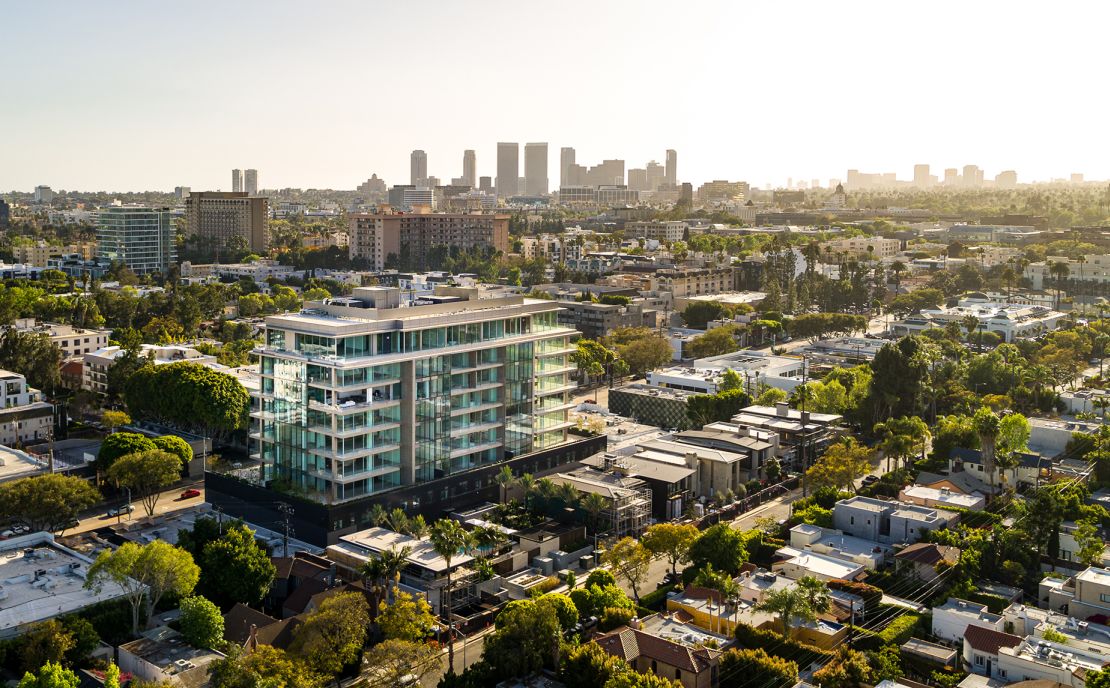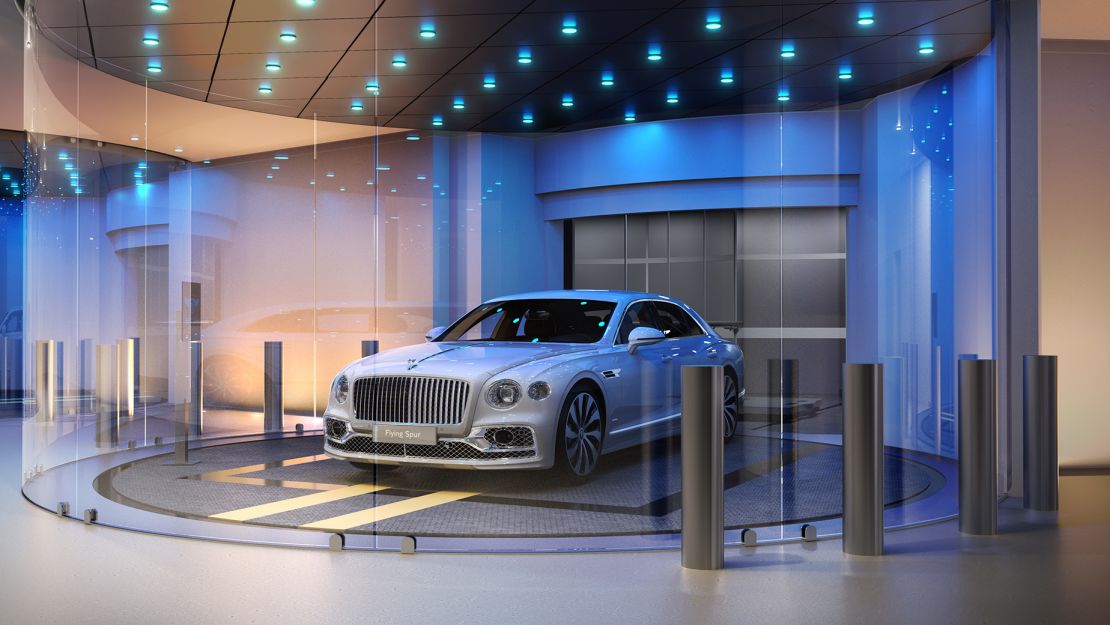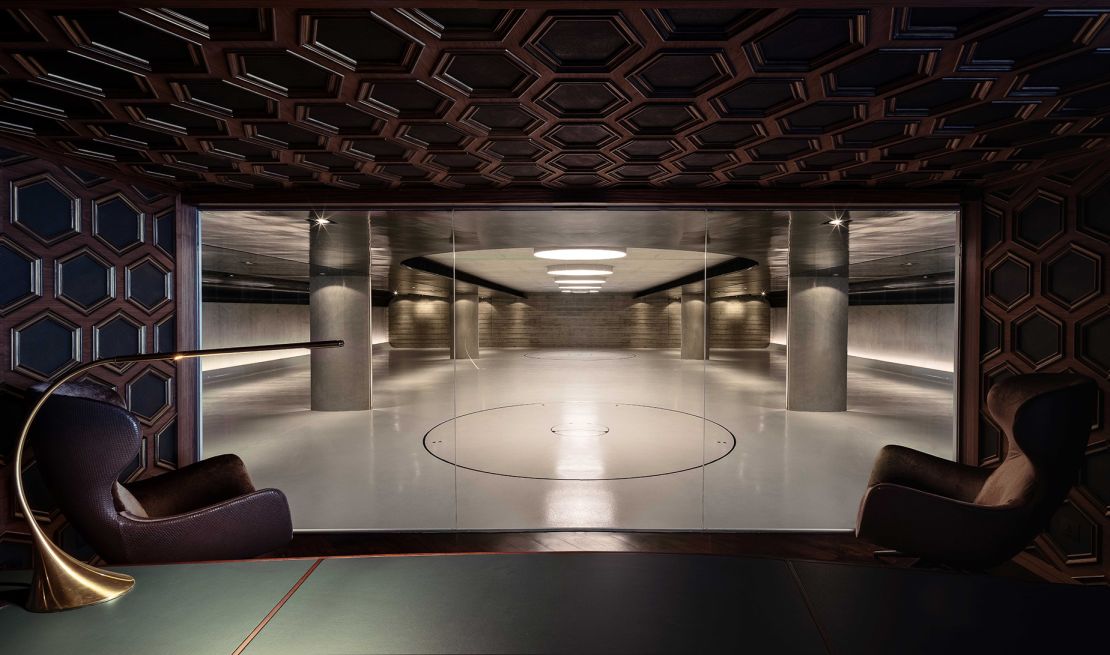Gil Dezer has a commanding view from his four-floor penthouse at the top of his 60-story residential tower in Miami. But the billionaire property developer is not that interested in looking out across the beach towards the Bahamas. He prefers to gaze through his large internal windows at 11 of his favorite cars.
“From my living room I can see two cars, from my kitchen I can see two more cars, and then seven from my man cave,” Dezer, who is 48, told CNN via video call, preferring to describe, rather than show me, his apartment. “For me, it’s like an art collector with a Da Vinci: He doesn’t put it in storage, he puts it on the wall.”
Dezer said his own Mona Lisa is one of his three exotic supercars: a McLaren Speedtail, a Porsche 918 and a Bugatti Chiron, each of which is worth more than a million dollars. It’s why, when he commissioned the tower, he helped design a central elevator that whisks vehicles up to personal, glass-walled sky garages.

For the super-rich car enthusiast, the humble garage — traditionally a utilitarian lock-up and object of the suburban dream that was cut off from the rest of the home — has become prized real estate, where drivers can not only keep their cars but commune with them alongside like-minded friends.
“We call them ‘gallery spaces’ rather than garages now,” said Graham Harris, a founding partner at SHH Architecture and Interior Design in London, one of the world’s leading design studios for those of high net worth. “It’s all about drama and theater and backdrops and the right kind of lighting. Gone are the days when a garage was just a concrete bunker.”
Harris — whose projects have included a £125 million ($158 million) refurbished mansion on London’s prestigious Belgrave Square — told CNN garages are growing not only to house expanding car collections (he recently completed a 26-car basement garage under a new home in west London) but more living space, too.

In merging the garage and the traditional American basement den, these super-luxe “man caves” can include advanced car racing simulators with wraparound screens or virtual-reality headsets, as well as elaborate bars, full-length bowling alleys, golf simulators and giant screens for watching sport.
“A lot of clients are ordering the Samsung ‘Wall’ (a bespoke LED display), which can be any size you want, with a starting price of £300,000 ($385,000). It creates an incredible backdrop for any scene you want in your garage,” Harris added.
Materials are also changing. Concrete floors are passé; Harris now commissions hand-poured resin that can be finished in any color and protects car tires while also repelling dirt or oil. Lighting can be recessed into the floors to highlight cars so that they appear to almost float.

Turntables in the floor and sophisticated hydraulic racking systems make it possible to stack, move and display cars easily, all the better for any in-house valets, mechanics or drivers to ensure a favored vehicle is on hand at any given time.
Harris sends me a photo of a 16-car garage he created “somewhere in Europe.” Visible through a large window that can be frosted at the touch of a button, it has a resin floor and a central turntable with a high-gloss black ceiling designed to mirror the cars beneath. On the other side of the glass, the client’s study stands slightly raised above the garage, with crown-cut walnut walls with hexagonal leather panels and hand-gilded moldings.
It’s all a world away from the functional spaces Dezer’s father Michael used to house his cars when he started the family’s property empire. The priority for Michael, a bus driver’s son from Tel Aviv who moved to the US aged 21, was simply finding room for them all.

“He had 85 cars when I was in fifth grade and bought an old car dealership to keep them in,” Dezer Jr said. The family ended up buying a disused shopping mall in Orlando, where Michael now keeps more than 1,800 cars worth around $200 million in the Orlando Auto Museum, part of Dezerland Park, a theme park.
Gil Dezer has taken a different approach, with his own collection of just 32 cars split between his home in the Hamptons and his Miami penthouse. He wants to see and drive them all the time, immersing himself, and his fellow residents, in a kind of autopia.
His building, which was completed in 2017 at a cost of $480 million, is called the Porsche Design Tower and was one of the first such branded residential developments. The central car lift, patented as the “Dezervator,” made the tower a hit with those who valued privacy and security. Lionel Messi moved in when he signed with David Beckham’s Inter Miami soccer team (although Dezer said the footballer later moved to a house “in the middle of nowhere” when thousands of fans began to stake out the street outside the building).

The Dezers are about to start building the 62-floor Bentley Residences, also in Miami. It will include design cues from the car brand as well as four Dezervators and space for three or four cars for each of the 216 apartments, which will also have balcony swimming pools and range in price from $5.5 million to $35 million.
“Bentley wants (the development) to be a continuation of the automobile experience,” Dezer said. “We’re working on a system where the music playing in your car will continue when you step into your apartment.”
Of course you’d be mad to buy an apartment in the Porsche or Bentley tower if you didn’t own a car, but do you have to want to stare at your cars all day to live there? “You’re asking a very hurtful question right now,” Dezer said, laughing. “About 5% of residents have drywalled over the windows (into the garage). My sister has a beautiful apartment here and I walked in there and she had done it and I was about ready to kill her.”



